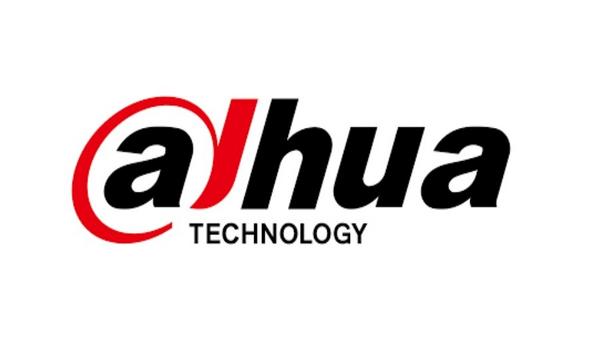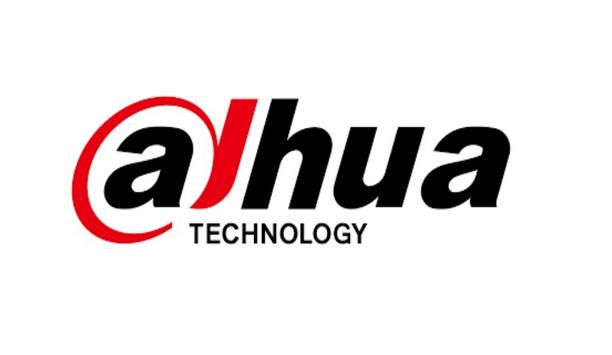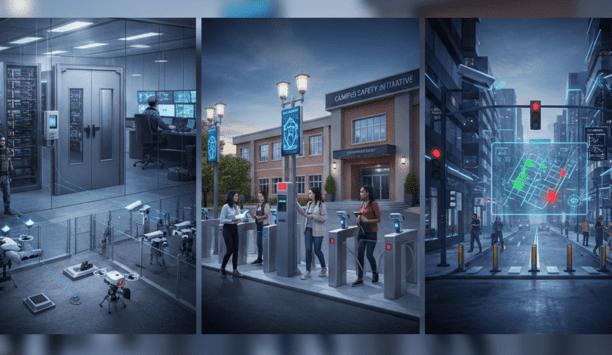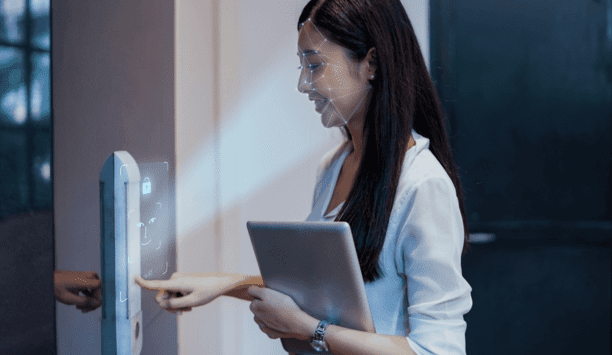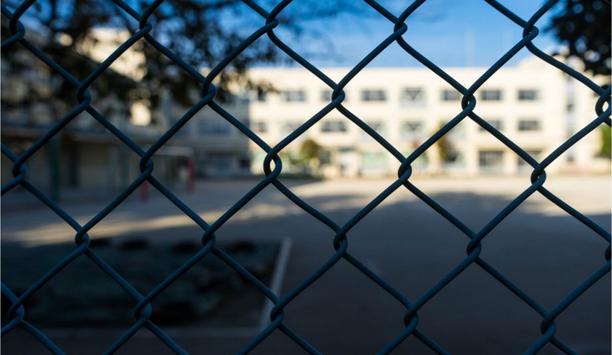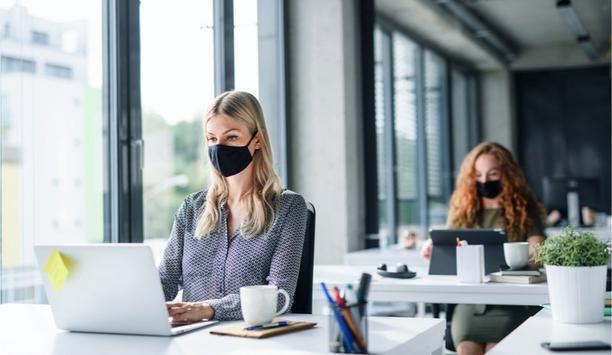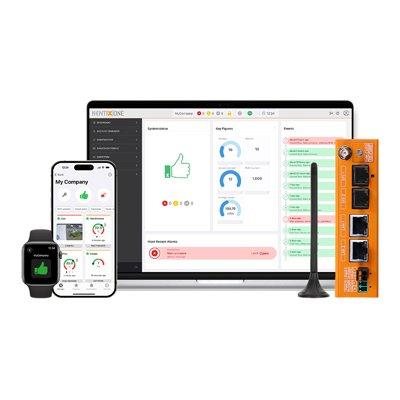The threat landscape we operate in today is changing all the time. Around the world, pressures on law enforcement bodies remain incredibly high as they face the challenge of rising international threat levels and a backdrop of intense political, social and economic uncertainty.
It is a challenge that demands a considered, proactive and dynamic response. It’s clear that new technologies, such as Artificial Intelligence (AI), can dramatically improve the effectiveness of today’s physical and cyber security systems and help us to better defend against a wide-spectrum of threats.
Finding the balance
Specifically speaking, for physical security systems to be effective, they must have the full support of the public. Airport-style environments where security checkpoint processes are implemented are both time consuming and obstructive, and feels, at times, they are in no one’s best interest. Oppressive, fortress-like environments are likely to quickly lose the backing of the public, who want to be able to go about their daily lives without being delayed or obstructed by cumbersome security checkpoints and procedures.
For physical security systems to be effective, they must have the full support of the public
However, after a large-scale security threat or attack occurs, it is often these more overt systems that we gravitate towards, often fuelled by a proven track record of both deterrence and detection. It’s the antithesis of ‘out of site, out of mind’ security. Having these large, bulky overt security systems offer reassurance to people and create a greater sense of security.
But what if we could instil this sense of security without monstrous overt systems? What if today’s physical security systems could allow for seamless people flow while creating safe environments, all done in a covert manner without interrupting peoples’ way of life? This is exactly what can be achieved with the some of the new physical security applications that incorporate AI.
Security solutions with AI: how, what, where?
Today, security solutions driven by AI technologies are being developed and can be covertly deployed across a range of physical environments to protect our global citizenry. These new AI-driven technologies are taking multiple different forms, depending on the locations they are designed to protect.
Video management surveillance systems (commonly referred to as VMS systems) are being enhanced by AI/computer vision technology to identify objects. These enhanced VMS systems can be deployed both inside and outside of buildings to identify and flag forbidden objects, such as visible guns, knives or aggressive people, in a wide range of public spaces, such as schools, hospitals, sport stadiums, event venues and transportation hubs. Recognised threat objects in hand or suspicious behaviours can be identified and flagged instantaneously for onsite security to further investigate.
In addition, targeted magnetic and radar sensor technologies, concealed in everyday objects like planter boxes or inside walls, can now scan individuals and bags entering a building for concealed threat objects. Using AI/machine learning, these two sensor solutions combined can identify metal content on body and bag and match the item to a catalogue of threat items, such as guns, rifles, knives and bombs with metal shrapnel. Without this advanced multi-sensor solution, it becomes nearly impossible to discover a weapon on a person's body before it appears in an assailant’s hands. This multi-sensor solution allows for a touchless, unobtrusive access to a building, but allows for immediate notification to onsite security when a concealed threat is detected. The hidden technology thus empowers security staff to intercept threats before they evolve into a wider scale attack, while also maintaining the privacy and civil liberties of the public, unless, of course, they are carrying a concealed weapon or pose a physical threat.
AI-powered solutions proactively help onsite security to effectively safeguard the public
Unlike many large, fixed detection security systems, AI-powered solutions proactively help onsite security to effectively safeguard the public without causing mass obstruction and disruption.
Soft target hardening
Hardening a facility against physical attacks and threats can be expensive, as well as maintaining and running large fixed detection equipment. It may also result in the threat shifting to ‘softer’, less secure targets, for example schools, music venues and places of worship, all locations we’ve see active attacks in the past decade.
Around the world, we have seen the devastation to communities and the aftermath impact of these attacks. In the USA, for example, in February 2018, a 19-year-old gunman walked into Marjory Stoneman Douglas High School in Florida, and opened fire, killing 17 students and faculty members. And in the UK in May 2017, a suicide bomber attacked a concert venue in Manchester, tragically killed 22 people.
It is a global priority to make these soft target public gathering places more secure. But in doing so we cannot turn them into fortresses. The security industry, public sector and national and local government must collaborate to deploy intelligent systems with technology at their core to not only protect lives, but also preserve a way of life.
Integrated systems and behavioural detection
One of the biggest advantages of using AI technology is that it’s possible to integrate this intelligent software into building smarter, safer communities and cities. Essentially, this means developing a layered system that connects multiple sensors for the detection of visible and invisible threats.
Integrated systems mean that threats can be detected and tracked, with onsite and law enforcement notified faster, and possibly before an assault begins to take place. In many ways, it’s the equivalent of a neighbourhood watch programme made far more intelligent through the use of AI. Using technology in this way means that thousands of people can be screened seamlessly and quickly, without invading their civil liberties or privacy.
It’s not only knives, guns and explosives that intelligent systems can detect. They can also be trained to detect behaviour and potential invisible biological threats, such as viral threats currently facing our world today. This does not mean profiling individuals. Instead, using AI that is deployed on existing CCTV or thermal camera systems, it looks for indicators that may identify a physical altercation and disturbance, an elevated body temperature, indicative of viral fever, or lack of a face mask for health safety compliance.
When integrated, these solutions can provide onsite security with up-to-the-minute information to allow greater protection of the properties they serve. By using these intelligent, non-intrusive technologies, today’s security personnel are now more capable of detecting a wide range of threats.
This is the future of public safety and security, and we should expect to see these new technologies becoming more common over the coming years, as cities around the world strive to create smart, safer communities.
The human element
While technology can make a significant impact to existing security systems, it would be wrong to position it as the end-all, be all to preventing future attacks. Technology is only part of the solution. Well trained security personnel are also required; individuals who know how to use new technologies and the data they provide, and then make informed decisions about how to engage a potential bad actor or threat.
Not only will a properly trained security staff member help to prevent an attack from happening, but the extra insight provides by these intelligent systems can potentially interrupt an attacker in planning and walk through stages, or even before a weapon is drawn. This alone has many benefits beyond just preventing an attack. It means that authorities can help these individuals, some of whom may be suffering from mental health issues, to get the help they need from professional healthcare workers. By security personnel working with local authorities and healthcare professionals, potential attackers can get the support they need, from de-radicalisation programmes to specialised counselling, helping them return to being a healthy, productive member of society.
These intelligent systems can potentially interrupt an attacker in planning
AI for safer communities
AI’s ability to detect visible or invisible threats or behavioural anomalies will prove enormously valuable to many sectors across our global economy. Perhaps none more so, though, than to institutes of education, where we have seen many violent attacks over the course of the last few years. Specifically, the application of AI for detecting odd behavioural activity could be used to identify potential active shooter attacks, or even students who may be depressed and prone to committing suicide. Both tragedies we see weekly around the world.
One thing is clear, cross-sector collaboration and the application of integrated, intelligent AI technology that puts data and ultimate control into a human’s hands can be key to making our communities safer places to live.
Learn why leading casinos are upgrading to smarter, faster, and more compliant systems




